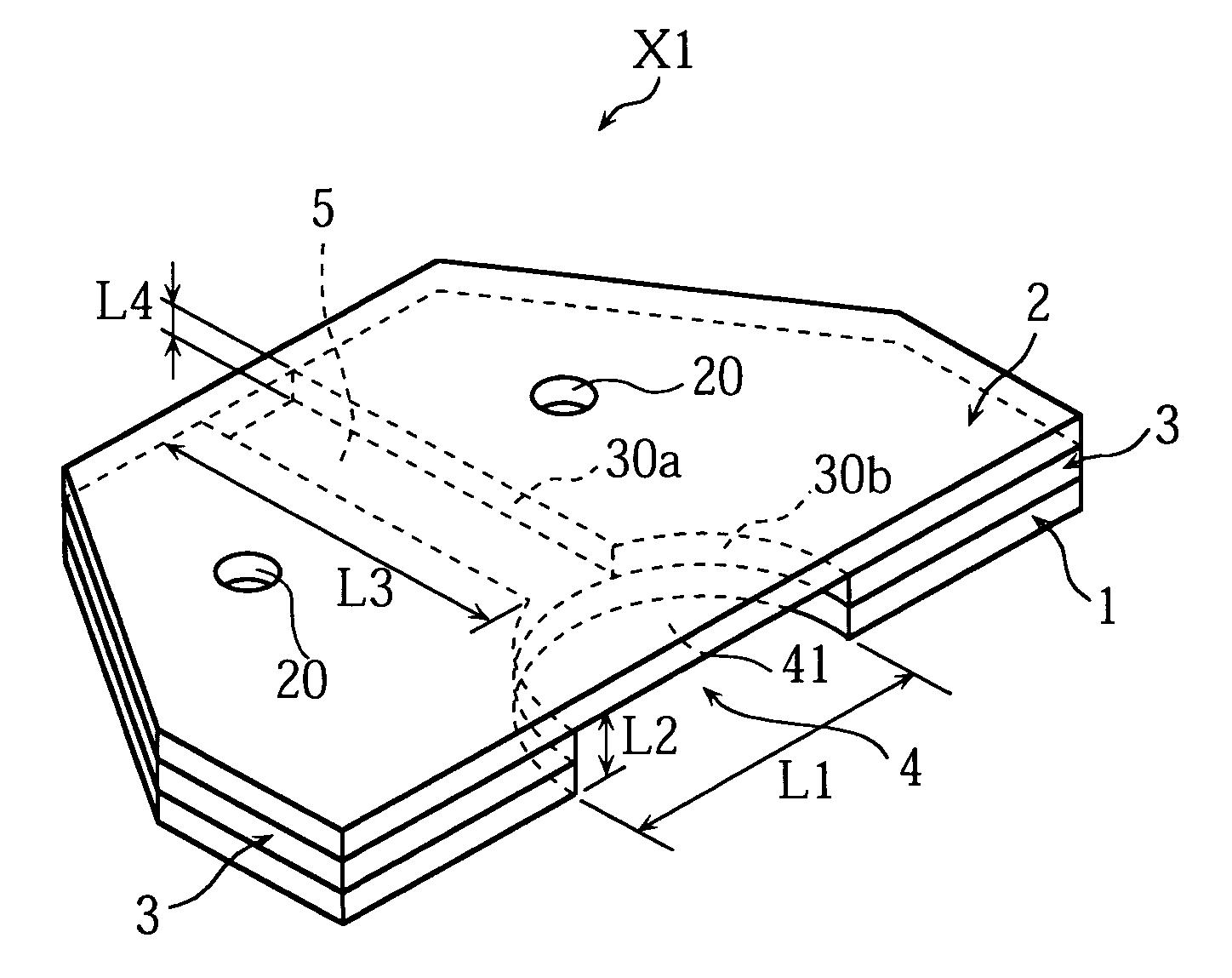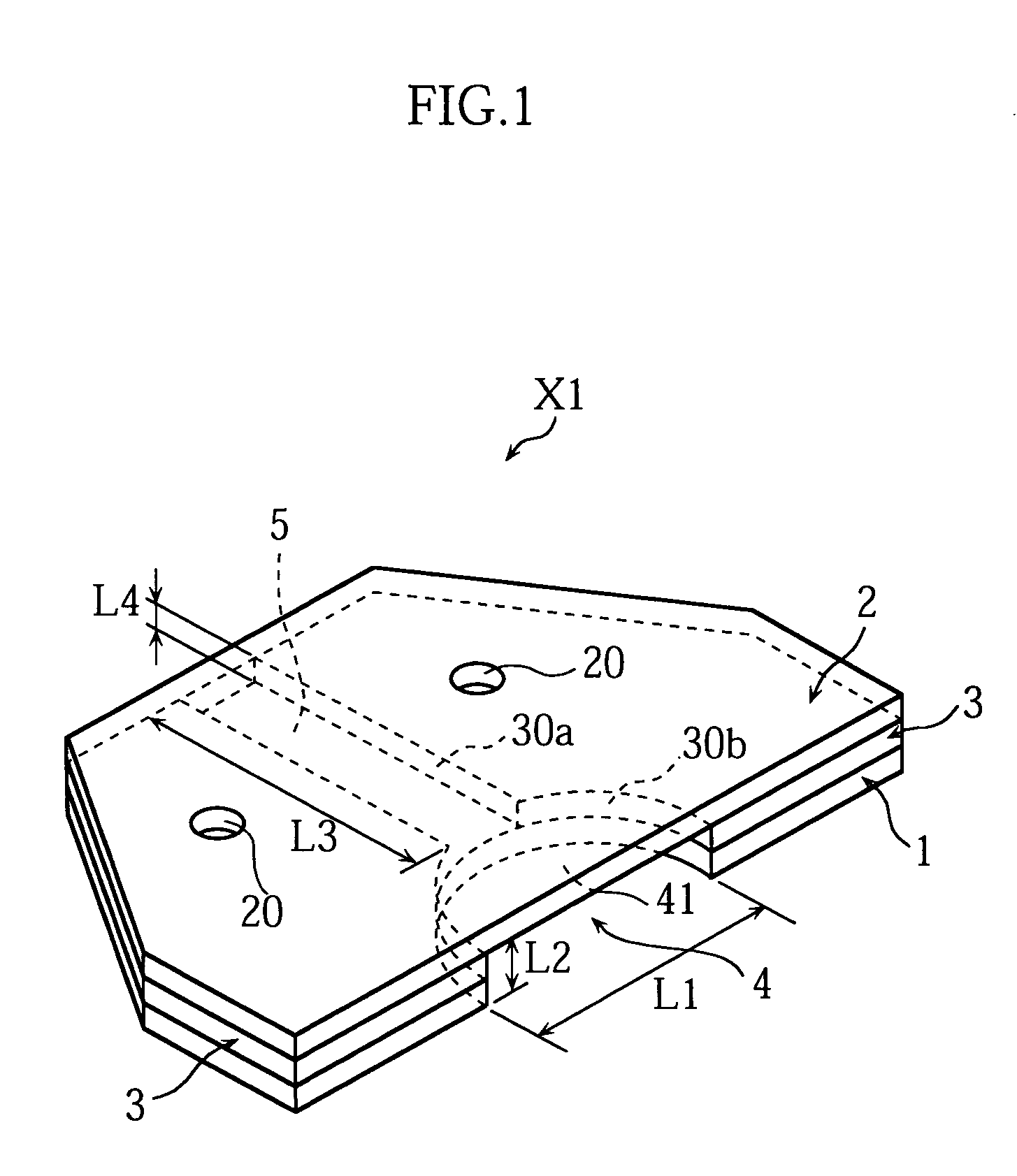Analyzing instrument
a technology of analyzing instruments and instruments, applied in the field of analyzing instruments, can solve the problems of measurement errors, inability to keep the time taken for filling the capillary with blood (suction time) constant, and difficulty in proper measurement, and achieve the effect of accurately measuring the concentration of a target componen
- Summary
- Abstract
- Description
- Claims
- Application Information
AI Technical Summary
Benefits of technology
Problems solved by technology
Method used
Image
Examples
example 1
[0099]In this example, the influences of hygroscopicity of the reagent layer on the suction speed were examined. The examination was performed using inventive biosensors which were similar in structure to the biosensor X2 shown in FIGS. 12 through 14, and comparative glucose sensors similar in structure to that shown in FIG. 23. The detailed structure of the biosensors is given in Table 1 below. As shown in Table 1, each of the inventive biosensors used for the examination had a Vinylon sheet attached to only one surface of a PET material, unlike the biosensor X2 shown in FIGS. 12 through 14. In each of the comparative biosensors, lecithin as a surface-active agent is applied to one surface of a PET material as a cover.
[0100]
TABLE 1(BIOSENSOR STRUCTURE)Capillary SizeTotalHeightWidthCover StructureLengthHWInventivePET of 100 μm6 mm120 μm1.2 mmBiosensorto one surfaceof which Vinylonsheet of 17 μmis attachedComparativePET of 100 μmBiosensorwith one surfacehydrophilicallytreated byapply...
example 2
[0103]In this example, the measurement reproducibility was examined. The examination of the measurement reproducibility was performed by comparing inventive biosensors with comparative biosensors with respect to change of responsive current with time. Specifically, while a standard solution was supplied to the reagent layer, a constant voltage of 200 mV was applied across the operative electrode and the counterpart electrode. The value of oxidation current flowing in this state was measured as the responsive current. The standard solution was prepared by dissolving glucose in physiological saline to provide a glucose concentration of 100 mg / dL while adjusting the blood cell concentration (Hct) to an intended value. The results for the inventive biosensors are given in FIGS. 18A, 19A and 20A, whereas the results for the comparative biosensors are given in FIGS. 18B, 19B and 20B. FIG. 18, FIG. 19 and FIG. 20 show the results when the Hct was 0%, 25% and 42%, respectively. The responsi...
example 3
[0107]In this example, the optimum capillary size was determined. The suction time was measured in the same manner as in Example 1 with respect to biosensors 1-12 including inventive and comparative biosensors which were the same in basic structure as those used in Example 1 but which had various capillary sizes. To evaluate the suction time for a sample liquid having a high viscosity, a standard solution of 70% Hct was used. The results are given in Table 3. In actual measurement using a biosensor, it is desirable to fill the capillary in 2.5 seconds to shorten the measurement time. Therefore, for purposes of evaluation in Table 3, the mark is applied to the biosensor whose suction time was no more than 2 seconds, the mark O to the biosensor whose suction time was 2-2.5 seconds, the mark to the biosensor whose suction time was 2.5-5 seconds, and the mark X to the biosensor whose suction time was no less than 5 seconds.
[0108]
TABLE 3(EVALUATION OF SUCTION SPEED)Capillary SizeCoverTo...
PUM
 Login to View More
Login to View More Abstract
Description
Claims
Application Information
 Login to View More
Login to View More - R&D
- Intellectual Property
- Life Sciences
- Materials
- Tech Scout
- Unparalleled Data Quality
- Higher Quality Content
- 60% Fewer Hallucinations
Browse by: Latest US Patents, China's latest patents, Technical Efficacy Thesaurus, Application Domain, Technology Topic, Popular Technical Reports.
© 2025 PatSnap. All rights reserved.Legal|Privacy policy|Modern Slavery Act Transparency Statement|Sitemap|About US| Contact US: help@patsnap.com



